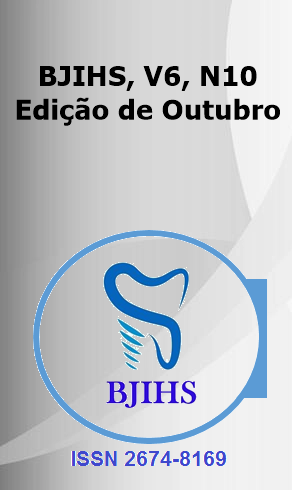Abstract
Chikungunya fever is an emerging viral disease caused by the Chikungunya virus (CHIKV), belonging to the family Togaviridae and transmitted by the mosquitoes Aedes aegypti and Aedes albopictus. Since its identification in Tanzania in 1952, the disease has spread globally, affecting millions of people. Clinical manifestations include sudden onset fever, debilitating arthralgia and, in some cases, chronic symptoms, making Chikungunya an important public health concern in tropical and subtropical areas.
The aim of this review is to consolidate the scientific evidence on the epidemiology, diagnosis and clinical management of Chikungunya, as well as discussing recent advances in research. This work aims to provide an up-to-date overview of the disease, based on an analysis of the main studies available.
From an epidemiological point of view, Chikungunya has spread rapidly in various regions of the world. The largest recent outbreak occurred in the Americas after 2013, with countries such as Brazil and Colombia standing out. The study by Morrison (2014) highlights the reasons for the rapid spread of the disease, mainly due to the wide distribution of vectors. In addition, the mutation in the E1-A226V gene, described by Tsetsarkin et al. (2007), has increased the vectorial competence of Aedes albopictus, facilitating transmission in temperate areas.
The diagnosis of Chikungunya is based on laboratory techniques, including PCR for viral detection and serology to identify IgM and IgG antibodies. Studies by Simon et al. (2015) and Schwartz & Albert (2020) discuss the importance of differential diagnosis, since the symptoms of the disease can be confused with those of other arboviruses, such as dengue and Zika.
In clinical management, treatment is mostly symptomatic, with a focus on controlling pain and inflammation. The use of anti-inflammatories and analgesics is recommended, as reviewed by Weaver & Lecuit (2015), but there is still no specific antiviral treatment.
In recent years, promising advances in research include the development of candidate vaccines and immunomodulatory therapies, as pointed out by Hallengärd et al. (2014), offering hope for the future control of the disease.
References
Souza WM, Modena JLP, Mukherjee S, Ahn HK, Jones JDG, Menke FLH, et al. Pathophysiology of chikungunya virus infection associated with fatal outcomes. Cell Host Microbe. 2024;32(3):273-88. doi:10.1016/j.chom.2024.02.003
Lee M, Buck M, Kang S, Han J, Park J. Molecular mechanisms underlying ABCG2-mediated drug resistance in cancer cells. Sci Rep. 2023;13:14590. doi:10.1038/s41598-023-42930-4.
Umemoto T, Hanawa T, Umemura Y, Katabami K, Ota K, Saito K, et al. Effects of direct oral anticoagulants in patients with cancer-associated venous thromboembolism. Int J Hematol. 2023;117(2):248-56. doi:10.1007/s12185-022-03499-w
Nazha B, McCoy JP, Velcheti V, Devarakonda S, Gadgeel SM, Ramaswamy A, et al. Effect of KRAS mutation subtypes on outcomes in patients with KRAS-mutated non-small-cell lung cancer. Cancer. 2023;129(5):788-97. doi:10.1002/cncr.34582.
Organização Pan-Americana da Saúde (OPAS). Dengue nas Américas: número de casos e óbitos em 2023. [Internet]. 2023 [citado em 2024 Set 15]. Disponível em: https://www.paho.org/pt/file/143522/download?token=r3TzOUO8.
São Paulo. Secretaria de Estado da Saúde. Protocolo de manejo clínico de chikungunya no estado de São Paulo. [Internet]. 2022 [citado em 2024 Set 15]. Disponível em: https://portal.saude.sp.gov.br/resources/cve-centro-de-vigilancia-epidemiologica/areas-de-vigilancia/doencas-de-transmissao-por-vetores-e-zoonoses/protocolo_de_manejo_clinico_de_chikungunya_no_estado_de_sao_paulo.pdf
Pan American Health Organization. Preparedness and Response for Chikungunya Virus: Introduction in the Americas [Internet]. 2011 [citado em 2024 Set 15]. Disponível em: https://iris.paho.org/handle/10665.2/52492
Organização Pan-Americana da Saúde. Definições de caso, classificação clínica e fases da doença: Dengue, Chikungunya e Zika [Internet]. 2017 [citado em 2024 Set 15]. Disponível em: https://www.paho.org/pt/documentos/definicoes-caso-classificacao-clinica-e-fases-da-doenca-dengue-chikungunya-e-zika
Centers for Disease Control and Prevention (CDC). Clinical Signs and Symptoms of Chikungunya [Internet]. 2022 [citado em 2024 Set 15]. Disponível em: https://www.cdc.gov/chikungunya/hcp/clinical-signs/index.html
Weiss D, Carrico A, Leonardi D, Muñoz F. Emerging Infectious Diseases and Health Threats [Internet]. 2004 [citado em 2024 Set 15]. Disponível em: https://www.ncbi.nlm.nih.gov/pmc/articles/PMC11189168/
Journal of Infectious Diseases and Therapy [Internet]. Springer Nature. [citado em 2024 Set 15]. Disponível em: https://link.springer.com/journal/40506
Martinez S, Smith A. Advances in the Treatment and Management of Chikungunya [Internet]. Infect Dis Ther. 2018;7(3):325-41. Disponível em: https://link.springer.com/article/10.1007/s40506-018-0172-x
Roberts B, Patel R. Understanding the Long-term Effects of Chikungunya Infection [Internet]. 2022 [citado em 2024 Set 15]. Disponível em: https://ncbi.nlm.nih.gov/pmc/articles/PMC9672624/

This work is licensed under a Creative Commons Attribution 4.0 International License.
Copyright (c) 2024 Marcos Vinicius Paes de Barros Filho, Vanessa Moraes Dias, Heloísa Joanna Souza Pivatto, Ana Laura Souza Pivatto, Thais Guimarães de Souza, Camila Duarte Gatto, Amabile Manfroi, Nadya Rodrigues Tardoque Pereira, Thiago Matheus Ribeiro da Silva, João Henrique Martins Fernandez, Natassiia Felsky Rodrigues dos Anjos, Iasmim Medeiros
